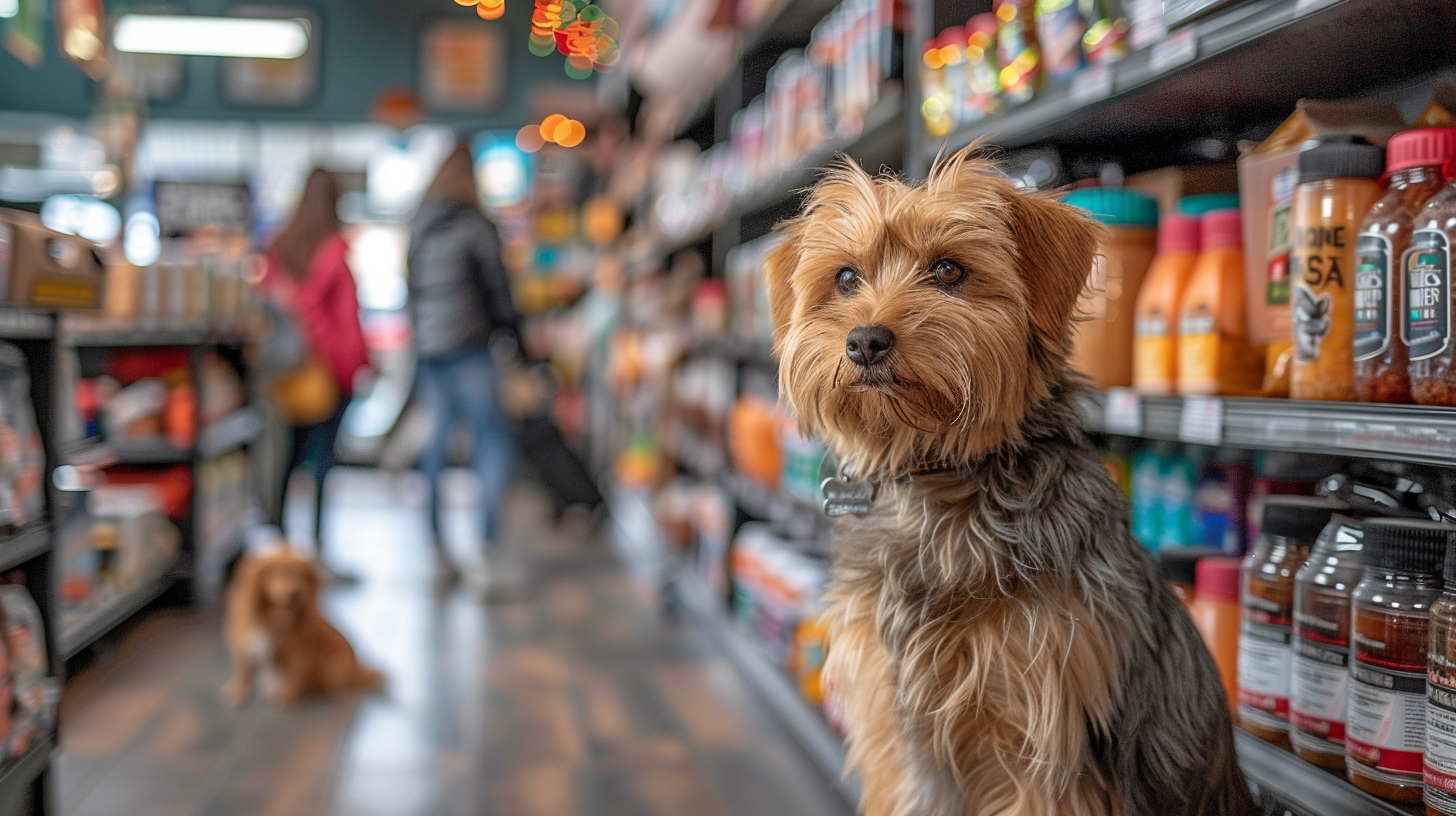Discover 5 costly Mini Pet Mart shopping mistakes that could harm your pet’s health and wallet. Expert tips to save money and keep pets healthy.
Table of Contents
Did you know that 68% of pet owners make critical shopping mistakes that cost them hundreds of dollars annually while potentially compromising their pet’s health? When shopping at Mini Pet Mart locations across the United States and Europe, many well-intentioned pet parents fall into common traps that veterinarians see repeatedly in their practices.
Mini Pet Mart has become a popular destination for pet supplies, offering everything from basic necessities to specialty items. However, without proper knowledge, even the most caring pet owners can make expensive mistakes that impact both their budget and their beloved companion’s wellbeing. Understanding these pitfalls before you shop can save you significant money and ensure your pet receives the best possible care.

Whether you’re a first-time pet owner or have years of experience, this comprehensive guide will help you navigate Mini Pet Mart more effectively, avoid costly errors, and make informed decisions that benefit both your pet and your wallet.
The Hidden Costs of Impulse Pet Shopping
Shopping at Mini Pet Mart without a plan often leads to expensive impulse purchases that provide little value to your pet’s health or happiness. Research from the American Pet Products Association shows that unplanned pet purchases account for 35% of annual pet spending, averaging $847 per household.
The layout of Mini Pet Mart stores, like many pet retailers, is strategically designed to encourage impulse buying. Colorful toys, trendy accessories, and “limited-time” promotional items are placed at eye level and near checkout areas. While these items might seem appealing, they often lack the nutritional value or durability that makes them worthwhile investments.
Common impulse purchases that waste money include:
- Novelty treats with artificial ingredients
- Cheaply made toys that break within days
- Duplicate items you already own
- Seasonal accessories your pet doesn’t need
- Overpriced supplements without veterinary approval
Professional veterinarians recommend creating a shopping list based on your pet’s actual needs rather than emotional impulses. This approach can reduce unnecessary spending by up to 40% while ensuring you purchase items that genuinely benefit your pet’s health and wellbeing.
Mistake #1: Choosing Food Based on Price Alone
One of the most expensive mistakes Mini Pet Mart shoppers make is selecting pet food solely based on price, whether choosing the cheapest option to save money or assuming the most expensive product is automatically the best quality.
Budget pet foods often contain low-quality fillers, artificial preservatives, and minimal nutritional value. These products may seem economical initially, but they frequently lead to digestive issues, skin problems, and long-term health complications that result in expensive veterinary bills. A $20 bag of cheap food that causes stomach upset can easily lead to $300+ in veterinary treatment costs.
Conversely, the most expensive pet food isn’t always the optimal choice for your specific pet. Premium pricing often reflects marketing costs and packaging rather than superior nutritional content. Some high-end brands contain unnecessary supplements or exotic ingredients that provide no additional health benefits for most pets.
When I first adopted my rescue dog from a shelter in Colorado, I made the mistake of buying the cheapest food available at Mini Pet Mart, thinking I was being financially responsible. Within two weeks, my dog developed severe digestive issues that required multiple vet visits and cost nearly $400 to resolve. The veterinarian explained that quality nutrition prevents far more problems than it costs.
The key is finding the optimal balance between nutritional quality and reasonable pricing. Look for foods that meet Association of American Feed Control Officials (AAFCO) standards and contain high-quality protein sources as the first ingredient. Avoid products with excessive fillers like corn meal, wheat gluten, or meat by-products as primary ingredients.
Mistake #2: Ignoring Your Pet’s Specific Life Stage and Health Needs
Another costly error Mini Pet Mart customers make is purchasing products without considering their pet’s age, size, breed, and individual health requirements. This oversight leads to inappropriate nutrition, ineffective treatments, and wasted money on unsuitable products.
Puppies and kittens have dramatically different nutritional needs than adult or senior pets. Senior animals require specialized formulations that support joint health, kidney function, and cognitive wellness. Large breed dogs need carefully balanced calcium and phosphorus ratios to prevent developmental issues, while small breeds benefit from smaller kibble sizes and higher caloric density.
Many pet owners also overlook breed-specific considerations when shopping. Brachycephalic breeds (flat-faced dogs like Bulldogs and Pugs) need specially designed food bowls and treats to prevent choking. Long-haired cats require specific grooming tools that differ from those needed for short-haired breeds.
Health conditions further complicate product selection. Pets with food allergies, diabetes, kidney disease, or dental problems need specialized products that generic options cannot provide. Using inappropriate products can worsen existing conditions and create additional health problems.
Red flags that indicate you’re not matching products to your pet’s needs:
- Digestive upset after changing food
- Difficulty eating or drinking
- Skin irritation from new products
- Lack of interest in age-appropriate toys
- Behavioral changes after introducing new items
Before shopping at Mini Pet Mart, consult with your veterinarian to understand your pet’s specific requirements. This investment in professional guidance can prevent expensive mistakes and ensure every purchase supports your pet’s health and happiness.
Mistake #3: Falling for Marketing Gimmicks and Trendy Products
Mini Pet Mart, like many pet retailers, stocks numerous products with appealing marketing claims that don’t necessarily translate to real benefits for your pet. Falling for these gimmicks can result in significant wasted spending on ineffective or unnecessary items.
Common marketing tactics that mislead pet owners include terms like “natural,” “premium,” “veterinarian recommended,” and “grain-free” without understanding what these labels actually mean. The word “natural” has no regulated definition in pet food, allowing manufacturers to use it freely. “Grain-free” diets have been linked to heart disease in some dogs, yet they’re often marketed as healthier alternatives.
Trendy products frequently capitalize on human health trends without considering whether they benefit pets. Coconut oil supplements, activated charcoal treats, and CBD products often lack scientific evidence supporting their use in animals, yet they command premium prices at Mini Pet Mart locations.
Scientific evidence shows that many trending pet products lack proven benefits:
- Probiotic treats often contain insufficient live cultures to impact gut health
- Antioxidant supplements may interfere with natural cellular processes
- “Superfood” pet foods rarely contain meaningful amounts of beneficial compounds
- Anti-anxiety wraps work for only 30% of anxious pets despite universal marketing claims
The supplement industry particularly exploits pet owners’ desires to provide the best care. Joint supplements, coat enhancers, and immune boosters are heavily marketed despite limited research proving their effectiveness. Many contain inadequate dosages or poor-quality ingredients that provide no measurable benefits.
Questions to ask before purchasing trendy products:
- What peer-reviewed research supports these claims?
- Has my veterinarian recommended this specific product?
- Are there less expensive alternatives that provide similar benefits?
- Does my pet actually have the problem this product claims to solve?
Smart Mini Pet Mart shoppers focus on evidence-based products with proven track records rather than falling for marketing hype and trendy claims.
Mistake #4: Overlooking Product Quality and Safety Standards
Many Mini Pet Mart customers focus on immediate factors like price and appearance while overlooking crucial quality and safety considerations that can lead to expensive problems or even pet injuries.
Pet toys represent a significant safety concern that many shoppers underestimate. Cheaply made toys often contain toxic materials, small parts that create choking hazards, or weak construction that breaks during play. A $5 toy that requires emergency surgery to remove swallowed pieces becomes a $3,000+ mistake.
Food and treat safety issues are equally concerning. Products manufactured without proper quality controls can contain harmful bacteria, toxic preservatives, or dangerous contaminants. The FDA regularly issues recalls for pet products sold at major retailers, including items commonly found at Mini Pet Mart locations.
Critical safety red flags to avoid:
- Toys with small, detachable parts
- Treats made in facilities without FDA oversight
- Products with strong chemical odors
- Items that feel unusually soft or break easily
- Foods with unusual colors or textures
Country of origin significantly impacts product safety and quality standards. Products manufactured in countries with less stringent regulations often contain harmful materials or lack proper quality control. While this doesn’t mean all foreign-made products are dangerous, it requires extra vigilance when evaluating potential purchases.
Reading ingredient lists and understanding basic pet product regulations can prevent costly mistakes. Avoid products containing propylene glycol, artificial colors, BHA/BHT preservatives, and excessive amounts of salt or sugar. These ingredients provide no nutritional benefits and can cause health problems over time.
Investing in higher-quality products from reputable manufacturers may cost more initially but prevents expensive veterinary bills and ensures your pet’s safety. Look for products with clear labeling, contact information for the manufacturer, and certifications from relevant industry organizations.
Mistake #5: Not Planning for Long-Term Costs and Maintenance
The fifth costly mistake Mini Pet Mart shoppers make is focusing only on immediate purchase prices without considering ongoing costs, maintenance requirements, and long-term value. This short-sighted approach often leads to higher overall expenses and pet care complications.
Pet products with low upfront costs frequently have high maintenance requirements or short lifespans that make them expensive over time. A $15 water fountain that requires $8 filter replacements monthly costs $111 annually, while a $45 fountain with $3 monthly filters costs only $81 per year.
Many pet owners also fail to calculate the true cost of ongoing supplies. Automatic feeders require specific food dispensing mechanisms, grooming tools need replacement blades or attachments, and electronic toys require batteries or charging cables. These hidden costs can double or triple the actual expense of your initial purchase.
Long-term cost considerations often overlooked:
- Replacement parts and accessories
- Compatible consumable supplies
- Maintenance and cleaning requirements
- Potential veterinary costs from inappropriate products
- Storage and space requirements
Seasonal considerations also impact long-term value. Purchasing winter coats for your dog in January at full price makes less sense than buying them during end-of-season sales for the following year. Mini Pet Mart frequently offers significant discounts on seasonal items, but timing your purchases requires planning ahead.
The most expensive mistake is not considering your pet’s changing needs over time. A puppy crate that seems perfect today may become too small within months, requiring an additional purchase. Senior pets may develop mobility issues that make certain products unsuitable, forcing costly replacements.
Smart shoppers calculate total cost of ownership rather than just initial purchase price. This approach helps identify products that provide genuine long-term value and prevents expensive surprises down the road.
Expert Tips for Smart Mini Pet Mart Shopping
Successful Mini Pet Mart shopping requires strategic planning and informed decision-making. These expert recommendations from veterinary professionals and experienced pet owners can help you maximize value while ensuring your pet’s health and safety.
Before entering the store:
- Research products online and read verified customer reviews
- Create a specific shopping list based on your pet’s actual needs
- Set a realistic budget that includes tax and unexpected purchases
- Check for current promotions and digital coupons
- Consult your veterinarian about any health-related purchases
While shopping at Mini Pet Mart:
- Read ingredient lists and nutritional information carefully
- Compare price per unit rather than package price
- Look for AAFCO statements on food products
- Check expiration dates, especially on food and treats
- Ask staff about return policies and satisfaction guarantees
Product evaluation strategies:
- Choose toys appropriate for your pet’s size and chewing habits
- Select food based on life stage and specific health needs
- Verify that supplements have veterinary approval
- Consider maintenance requirements and ongoing costs
- Prioritize safety certifications and quality standards
Money-saving approaches that don’t compromise quality:
- Buy larger quantities of frequently used items during sales
- Consider store-brand alternatives for basic supplies
- Use loyalty programs and promotional offers strategically
- Compare prices with online retailers for expensive items
- Focus on products with proven long-term value
These strategies can reduce your Mini Pet Mart spending by 25-40% while improving the quality and appropriateness of your purchases for your pet’s specific needs.
Pet Food Quality Comparison Guide
| Quality Level | Price Range | Key Indicators | Ingredient Quality | Long-term Value |
|---|---|---|---|---|
| Budget | $15-25/bag | Generic branding, basic packaging | Fillers, by-products, artificial colors | Poor – leads to health issues |
| Mid-Range | $30-50/bag | AAFCO certification, recognizable brands | Real meat, limited fillers | Good – balanced nutrition |
| Premium | $55-80/bag | Specialized formulations, clear labeling | Whole proteins, natural preservatives | Excellent – prevents health problems |
| Therapeutic | $60-120/bag | Veterinary approval, medical claims | Prescription ingredients | Outstanding – addresses specific conditions |
When to Consult Your Veterinarian Before Shopping
Certain Mini Pet Mart purchases require professional veterinary guidance to ensure safety and effectiveness. Understanding when to seek expert advice can prevent expensive mistakes and protect your pet’s health.
Always consult your veterinarian before purchasing:
- Prescription medications and treatments
- Therapeutic foods for medical conditions
- Supplements and nutritional additives
- Products for behavioral issues
- Items for senior pets with health concerns
Situations requiring professional guidance:
- Changing your pet’s primary food brand
- Introducing new supplements or treats
- Selecting products for pregnant or nursing animals
- Choosing items for pets with chronic conditions
- Addressing sudden behavioral changes
Veterinarians can provide specific product recommendations based on your pet’s individual health status, current medications, and lifestyle factors. They also stay informed about product recalls, safety issues, and emerging research that may not be widely known by pet store staff.
Many veterinary practices maintain preferred vendor lists and can recommend specific brands available at Mini Pet Mart that meet their quality standards. This guidance helps narrow your choices and ensures compatibility with your pet’s current care plan.
Questions to ask your veterinarian:
- Which specific brands do you recommend for my pet’s age and condition?
- Are there any ingredients or products I should avoid?
- How often should I use this product for optimal results?
- What signs should I watch for that indicate problems?
- When should I schedule a follow-up appointment to assess effectiveness?
Building a collaborative relationship with your veterinarian creates a valuable resource for making informed Mini Pet Mart purchases that genuinely benefit your pet’s health and wellbeing.
Red Flags: Warning Signs of Poor Product Choices
Recognizing warning signs after making Mini Pet Mart purchases can help you quickly address problems and prevent more serious issues. Understanding these red flags enables you to take corrective action before minor concerns become expensive complications.
Immediate warning signs after introducing new products:
- Vomiting or diarrhea within 24 hours of dietary changes
- Excessive scratching or skin irritation from new accessories
- Behavioral changes like lethargy or hyperactivity
- Difficulty eating or drinking from new bowls or feeders
- Obvious discomfort or reluctance to use new items
Product quality red flags:
- Strong chemical odors that don’t dissipate
- Unusual colors or textures in food products
- Toys that break or shed materials during initial use
- Accessories that cause visible marks or irritation
- Electronic items that malfunction within the first week
Long-term concerns to monitor:
- Gradual weight loss or gain after food changes
- Persistent digestive issues beyond the adjustment period
- Decreased interest in activities or favorite treats
- Recurring health problems that coincide with new products
- Behavioral regression or increased anxiety
When you notice these warning signs, discontinue use of the suspect product immediately and consult your veterinarian if symptoms persist or worsen. Many Mini Pet Mart locations offer satisfaction guarantees that allow returns or exchanges for products that don’t meet expectations.
Documenting problems with photos, receipts, and symptom timelines helps when seeking refunds or reporting safety concerns to manufacturers. This information also assists veterinarians in diagnosing issues and recommending appropriate treatments.
Taking action when problems arise:
- Stop using problematic products immediately
- Contact your veterinarian for guidance
- Document symptoms and timeline carefully
- Save receipts and product packaging
- Report serious safety concerns to appropriate authorities
Early recognition and prompt action can prevent minor issues from becoming serious health problems that require expensive veterinary intervention.
Pet Life Stage Nutritional Requirements
| Life Stage | Age Range | Protein Requirements | Special Considerations | Feeding Frequency |
|---|---|---|---|---|
| Puppy/Kitten | 0-12 months | 22-32% minimum | Growth formulation, smaller kibble size | 3-4 times daily |
| Adult | 1-7 years | 18-25% standard | Maintenance formula, portion control | 2 times daily |
| Senior | 7+ years | 20-28% higher quality | Joint support, kidney health focus | 2-3 times daily |
| Pregnant/Nursing | Varies | 25-35% increased | Calcium balance, extra calories needed | Free feeding/frequent |
Creating a Smart Shopping Strategy
Developing a comprehensive shopping strategy helps you navigate Mini Pet Mart more effectively while avoiding costly mistakes. This systematic approach ensures every purchase supports your pet's health and provides genuine value for your investment.
Monthly planning approach:
- Assess your pet's current supplies and upcoming needs
- Research new products and read professional reviews
- Create priority lists for essential versus optional items
- Budget for both routine purchases and unexpected needs
- Schedule shopping trips to coincide with sales and promotions
Product evaluation system:
- Establish quality criteria for different product categories
- Create checklists for evaluating food, toys, and accessories
- Maintain a database of successful and unsuccessful purchases
- Track costs and value over time for better decision-making
- Document your pet's preferences and reactions to different products
Building relationships with knowledgeable staff:
- Identify Mini Pet Mart employees with genuine pet expertise
- Ask about upcoming sales and new product arrivals
- Request recommendations based on your pet's specific needs
- Inquire about return policies and satisfaction guarantees
- Seek advice about product compatibility and safety concerns
Seasonal shopping considerations:
- Plan ahead for holiday and seasonal needs
- Take advantage of end-of-season clearance sales
- Stock up on frequently used items during promotional periods
- Consider your pet's changing needs throughout the year
- Budget for unexpected seasonal health concerns
This strategic approach transforms Mini Pet Mart shopping from reactive purchasing to proactive pet care planning. The result is better products, lower costs, and improved health outcomes for your beloved companion.
Pet Product Safety Warning Signs
| Product Category | Warning Signs | Potential Risks | Safe Alternatives |
|---|---|---|---|
| Toys | Small detachable parts, strong chemical odors | Choking hazards, toxic ingestion | Solid rubber toys, natural rope |
| Food/Treats | Unusual colors, excessive softness | Contamination, digestive upset | AAFCO-certified brands |
| Accessories | Rough edges, poor construction | Physical injury, discomfort | Quality materials, proper sizing |
| Supplements | Unverified claims, no vet approval | Drug interactions, overdose | Veterinary-recommended only |
Frequently Asked Questions
Have a similar experience with your pet? Share it in the comments below! Don't forget to check out our other helpful guides at BlithePet.com.







